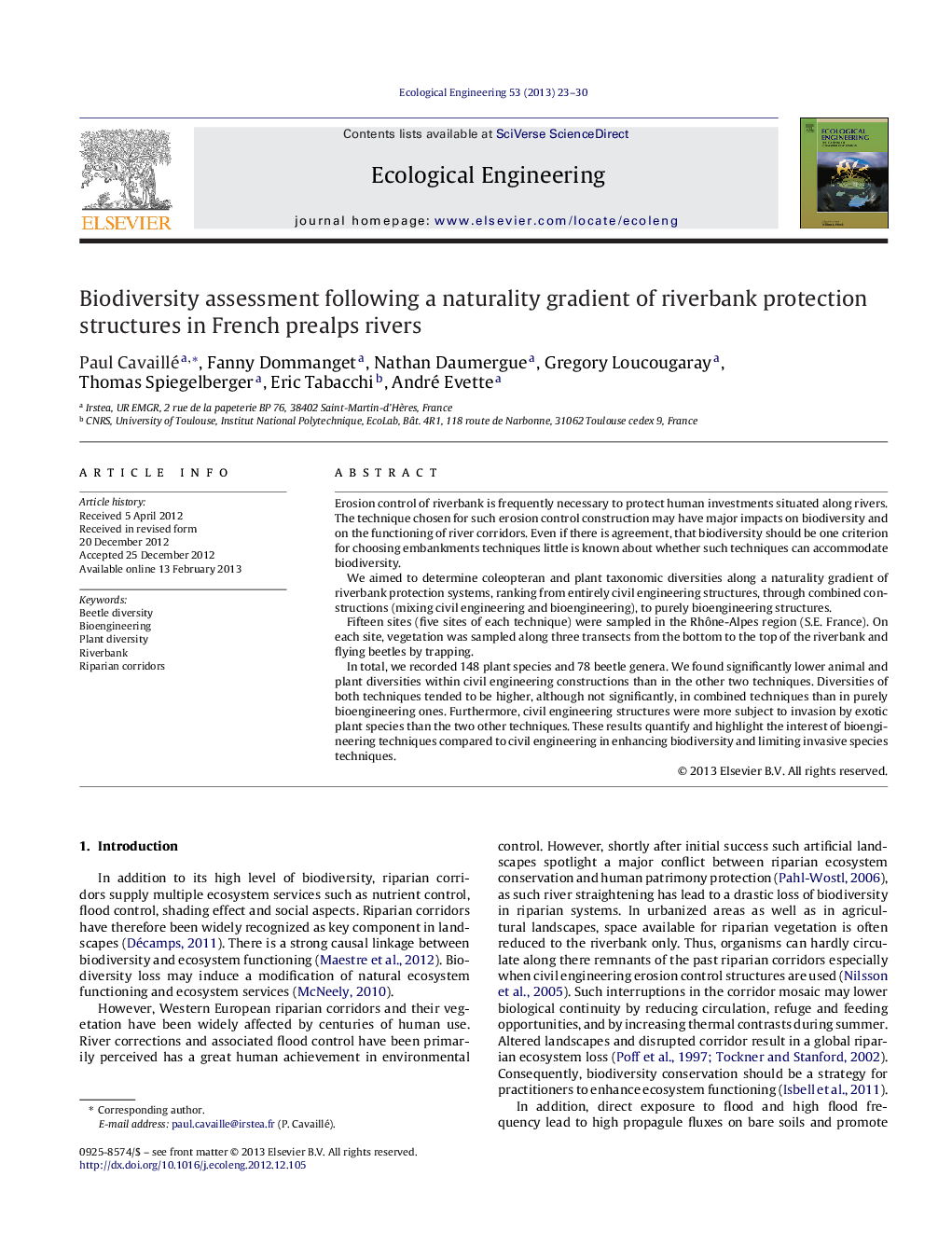| Article ID | Journal | Published Year | Pages | File Type |
|---|---|---|---|---|
| 4389662 | Ecological Engineering | 2013 | 8 Pages |
Erosion control of riverbank is frequently necessary to protect human investments situated along rivers. The technique chosen for such erosion control construction may have major impacts on biodiversity and on the functioning of river corridors. Even if there is agreement, that biodiversity should be one criterion for choosing embankments techniques little is known about whether such techniques can accommodate biodiversity.We aimed to determine coleopteran and plant taxonomic diversities along a naturality gradient of riverbank protection systems, ranking from entirely civil engineering structures, through combined constructions (mixing civil engineering and bioengineering), to purely bioengineering structures.Fifteen sites (five sites of each technique) were sampled in the Rhône-Alpes region (S.E. France). On each site, vegetation was sampled along three transects from the bottom to the top of the riverbank and flying beetles by trapping.In total, we recorded 148 plant species and 78 beetle genera. We found significantly lower animal and plant diversities within civil engineering constructions than in the other two techniques. Diversities of both techniques tended to be higher, although not significantly, in combined techniques than in purely bioengineering ones. Furthermore, civil engineering structures were more subject to invasion by exotic plant species than the two other techniques. These results quantify and highlight the interest of bioengineering techniques compared to civil engineering in enhancing biodiversity and limiting invasive species techniques.
